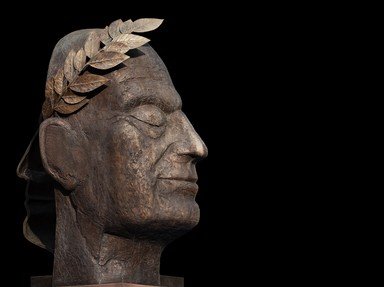Quiz Answer Key and Fun Facts
1. Historians dispute the birthplace of Hadrian, but it is generally agreed it was either Rome or which of these?
2. Publius Aelius Hadrianus Afer was Hadrian's father. Who was his mother?
3. Hadrian's father died in around 85 AD, resulting in him being put under the care of Trajan, who would later become emperor Trajan, and which other man?
4. Hadrian was a military tribune associated with three Roman legions. Who was emperor when he first enlisted for military service?
5. Who was Hadrian's wife?
6. Despite being heavily involved with the Roman military, Hadrian's reign was relatively peaceful.
7. Between 132-135 AD, which revolt broke out against Hadrian's rule?
8. One of Hadrian's most known accomplishments was his construction of Hadrian's Wall in Britain. Around how many years did it take to build?
9. Which of these was a lover and companion of Hadrian, who drowned in the Nile River under mysterious circumstances?
10. When Trajan was Roman emperor, Hadrian tried to advise him about an architectural problem. Who rebuffed Hadrian's suggestion with "Go away and draw your pumpkins. You know nothing about these problems."?
11. Hadrian started a trend in regards to how Roman emperors were depicted. Which of these did he sport which was previously unheard of?
12. Before his death in 138 AD, Hadrian nominated his adopted son, Antonius Pius, as his successor. This was on the condition that Antoninus Pius do which of these?
13. Who was Hadrian's brother-in-law, whom he originally considered to be his successor in 136 AD, but changed his mind?
14. Hadrian died in 138 AD, in his villa in Baiae, aged 62. What do most historians agree was his cause of death?
15. Hadrian was finally buried in the Mausoleum of Hadrian, Rome. Where was he originally buried?
Source: Author
LuH77
This quiz was reviewed by FunTrivia editor
gtho4 before going online.
Any errors found in FunTrivia content are routinely corrected through our feedback system.
